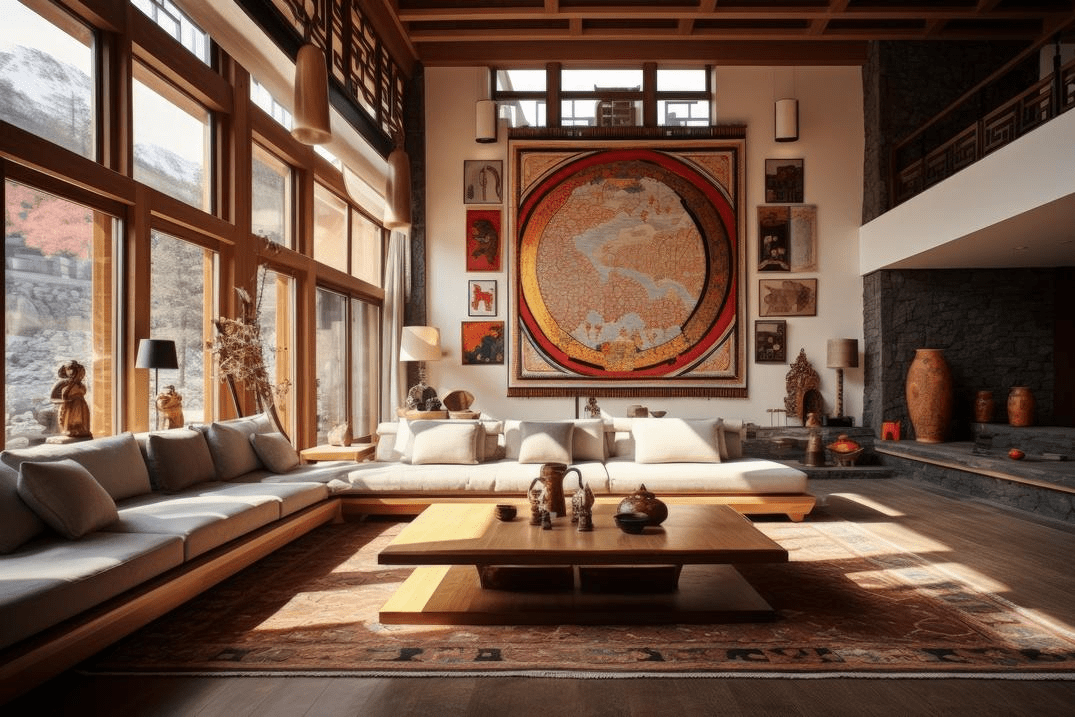What if you could redesign your entire living room—just by uploading a photo? In 2025, AI is doing exactly that, turning interior design into a faster, smarter, and more personalized experience. Whether you’re a DIY or a design pro, this shift is transforming how we style our spaces. In this article, we’ll explore how AI tools—and apps like Decory—are changing the rules of home decor.
Understanding the shift: from manual decor to AI-driven design
Traditionally, interior design required on-site visits, mood boards, multiple iterations with designers and physical shopping for furniture. In contrast, an interior AI app or AI interior design software can:
- Interpret room dimensions, furniture placement and lighting through photos or scans.
- Use generative AI to propose multiple layout and style options in minutes.
- Recommend furnishings, decor items, palettes and accessories tailored to your preferences.
- Allow you to “shop the look” virtually, making changes before ever buying anything.
In other words, the AI tool for interior design brings professional-quality styling and planning to homeowners, enabling rapid iterations at a fraction of the cost and time.
Key capabilities you’ll see in 2025’s AI interior design world
Here are the main functionalities that set modern AI design tools apart:
- Smart room layout & organisation
AI can automatically understand room geometry—walls, windows, doors, built-ins—and generate optimized layouts based on your inputs such as “living room with TV and sofa” or “bedroom with work-nook”. Using an AI living room design or AI bedroom design module, you can specify dimensions and get furniture placement suggestions. For example, “how to decorate a living room AI” workflows allow you to upload a photo and let the system plan the layout. - Generative AI for style & visuals
Generative AI interior design engines can take prompts like “Scandinavian minimal living room with warm wood tones” or “bohemian bedroom with plants and textures” and produce photorealistic visualisations. This capability of AI-generated interior design enables you to preview styles before committing. - Personalisation at scale
Modern tools use your preferences—colours you like, furniture style, lifestyle patterns—to tailor suggestions. The interior AI app learns from user feedback and refines future design iterations accordingly. - From photo → design
Apps now let you upload a photo (or scan room dimensions) and the AI proposes redesign options: “decorate a room with AI”, “use AI to decorate room” workflows. Tools like Decory offer exactly that: “Design from a photo” or “Smart layout with room dimensions”. - Real-time shopping & “shop the look”
After AI proposes a layout, many platforms link directly to furniture/decor items—“room decor AI”, “AI decorate room” experiences. You can seamlessly transition from concept to commerce. - Sustainability & informed styling
AI is now being used to suggest eco-friendly materials, optimise lighting and airflow and select furnishings based on environmental impact. Sustainability is a top trend in 2025.
Why you should embrace an AI-powered interior design tool (and why Decory stands out)
Speed & cost-efficiency
With AI tools you get faster layouts and visualisations—reducing back-and-forth between designer and homeowner. AI helps you avoid costly mistakes in furniture scale, placement or style mismatch.
Accessibility for non-professionals
Even if you’re not an interior designer, you can use an interior AI app or an AI room decorator to lay out your space, try styling options and make confident decisions.
Better visualisation and fewer surprises
When you use an AI living room design or AI kitchen design from a photo, you can preview how paint colour, lighting and furnishings interact, avoiding the dreaded “looks different than in catalogue” scenario.
Tailored to your space and taste
Rather than generic templates, generative AI adapts to your dimensions, your taste, your lifestyle needs and even regional preferences—making “AI for putting in room dimensions and getting organised” a practical reality.
Why Decory?
- Decory’s “Design from a photo” and “Smart layout with room dimensions” features give you an edge.
- Its “Shop the look” linking furniture and décor items means you can go from inspiration to execution seamlessly.
- With 15+ styles, it uniquely caters to niche design needs (e.g., users in the USA, Middle East or regions with specific cultural aesthetics).
- It’s built for both DIYers and professionals, matching your background as an SEO Executive and content creator—so the content you write aligns nicely with the tool itself.
Top trends in 2025 interior design powered by AI
Hybrid human + AI workflows
Designers today are collaborating with AI—using these tools to iterate faster, while still bringing human sensitivity, cultural awareness and storytelling into the mix.
Immersive experiences (VR/AR + AI)
Your design isn’t just a flat image anymore. AI supports VR/AR previews, letting you walk through a space virtually before execution.
Sustainable material suggestions
AI now factors in eco-credentials of materials, enabling “green design” to become practical rather than aspirational.
Democratisation of high-end design
What used to cost thousands can now be achieved with accessible AI tools. More homeowners, real-estate agents and rental hosts are using these capabilities.
Integrated smart home design
AI links design aesthetics with smart home functionality: lighting, acoustics, layout flow and person-centric design.
How to use AI (and Decory) to decorate your living room step-by-step
Here’s a practical walkthrough of “how to decorate a living room AI” with Decory (or similar tools):
- Capture your space: Take a clear photo of your living room or enter accurate room dimensions.
- Define your objective: Do you want a relaxing lounge, a multi-purpose family room, or a formal entertainment space?
- Upload or input the room in the AI tool: This is where an AI interior design app kicks in.
- Select your preferred style: Choose from the style palette (e.g., minimalist, modern, bohemian) and input any key requirements (TV wall, sofa size, natural light).
- Let the AI generate proposals: It will produce layout options, furniture placement suggestions and style boards.
- Review and refine: Pick the layout you like, tweak colours or furniture, adjust as needed.
- Shop the look: When you’re happy, click through to purchase or source furniture and décor items.
- Implement and test: After installation, live in it briefly and see if adjustments are needed—stay flexible.
- Share or iterate: If you’re a designer or real-estate agent, share the design output with clients or stakeholders.
- Post-completion feedback loop: The next time you redecorate (bedroom, kitchen etc), your tool remembers preferences.
With this workflow, “how to use AI to decorate a room” becomes intuitive, fast and effective.
Common challenges (and how to overcome them)
- Design tools don’t capture emotional nuance: AI can suggest layouts, but only you or a designer can embed personal stories, cultural touches, or emotional atmosphere.
- Over-automation risk: If you let the tool pick everything, you might end up with generic results. Always inject your personality.
- Quality of input matters: Poor photo or inaccurate dimensions lead to sub-optimal outcome.
- Local availability & shipping issues: If the AI recommends a piece not available in your region, you’ll need alternative sourcing.
- Safety & building codes: AI may not always factor structural or regulatory constraints—always review accordingly.
Why this matters for you (homeowner, real-estate agent, professional)
- As a homeowner, you can access near-professional results at lower cost and faster turnaround.
- As a real-estate agent, you can use tools like Decory to visualise spaces, stage virtually and market faster.
- As an interior designer or DIYer, you can speed up ideation, focus more on custom touches and deliver more value with less grunt-work.
FAQs – Your questions answered briefly
Q1: What is an AI interior design app?
A: It’s a software or mobile application that uses artificial intelligence to generate interior design solutions—layouts, style suggestions, furniture recommendations—based on your space, preferences and inputs.
Q2: Can I use AI to decorate a real room with specific dimensions?
A: Yes — many tools allow you to enter room dimensions or upload a photo, and then generate optimised layouts and design suggestions accordingly (see “AI for putting in room dimensions and getting organised”).
Q3: Does AI replace a professional interior designer?
A: Not entirely. AI automates and accelerates many parts of the design workflow, but human designers bring emotional intelligence, cultural context, storytelling and in-person execution.
Q4: How does generative AI interior design differ from standard design software?
A: Generative AI uses algorithms trained on large datasets to create novel layouts, styles and visuals with minimal input (e.g., a prompt + photo), whereas standard design software typically requires manual placement and design expertise.
Q5: Is it easy for novices to use an interior AI tool like Decory?
A: Yes — many modern apps are designed for non-professionals: you upload a photo or input dimensions, pick a style, let the AI propose options, then refine. You don’t need hardcore design training.
Q6: What should I consider when using AI generated interior design?
A: Ensure your input (photo/dimensions) is accurate, maintain your personal style so the result isn’t generic, check for regional furniture availability, and review safety/regulatory aspects (especially in real-estate settings).
Final word: The future is now — and you’re in control
In 2025, interior design is no longer limited to high-budget projects or professionals with years of experience. Thanks to AI powered interior design, generative AI interior design, and apps that let you decorate a room with AI, the barrier to stylish, functional, personalised interiors has dropped dramatically.
By leveraging a tool like Decory—which offers “design from a photo”, “smart layout with room dimensions”, multiple style options and “shop the look” capability—you’re aligning yourself with the future of home design. The key is to use AI not as a crutch, but as a springboard: let it accelerate your workflow, spark your creativity, and handle the heavy lifting, while you bring in the personality, context and story.
Ready to revolutionise your space? Upload your room, set your goal, pick your style—and let the AI-powered interior design era begin.



































